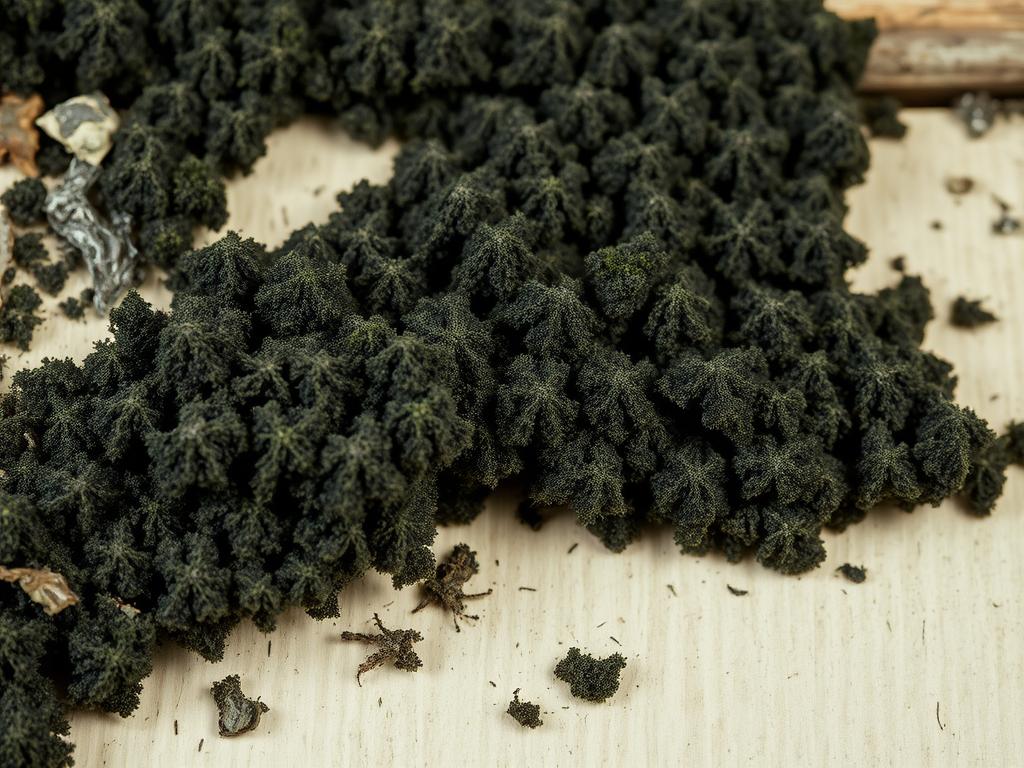When it comes to dangerous black mold in your home or business, certified stachybotrys mold remediation is not just a service—it’s a necessity. Stachybotrys chartarum, commonly known as black mold, poses serious health risks and requires professional handling by certified technicians with specialized equipment and training. This comprehensive guide explains why proper certification matters, the remediation process, and how to ensure your property is safely restored.
Understanding Stachybotrys: The Most Dangerous Black Mold
Stachybotrys chartarum is considered the most dangerous type of black mold found in buildings. Unlike common household molds, this toxic variety produces mycotoxins that can cause severe health problems when inhaled or touched.
Stachybotrys chartarum growing on damp building material
This particular mold species thrives in consistently damp environments with high cellulose content, such as drywall, ceiling tiles, wood, and paper products. It requires constant moisture to grow, which is why it’s commonly found after water damage from flooding, leaking pipes, or roof leaks.
Health Risks of Stachybotrys Exposure
Exposure to Stachybotrys can lead to numerous health issues, particularly for vulnerable populations like children, elderly individuals, and those with compromised immune systems. The mycotoxins produced by this mold can cause:
- Severe respiratory problems and difficulty breathing
- Chronic coughing and throat irritation
- Persistent headaches and fatigue
- Eye and skin irritation
- Neurological symptoms including memory loss
- Weakened immune system response
- In extreme cases, mycotoxicosis (mold poisoning)
Suspect Stachybotrys in Your Property?
Don’t risk your health or your family’s safety. Our certified mold remediation experts are available 24/7 for emergency assessment.
Why Certification Matters for Stachybotrys Mold Remediation
When dealing with toxic black mold, proper certification isn’t just a credential—it’s your assurance of safety and thoroughness. Certified stachybotrys mold remediation professionals have undergone rigorous training and follow industry-established protocols.
Key Certification Standards
The most respected certifications in the mold remediation industry include:
- IICRC (Institute of Inspection Cleaning and Restoration Certification) – Sets the standard for proper remediation techniques
- ACAC (American Council for Accredited Certification) – Offers Council-certified Microbial Remediator (CMR) credentials
- NAMP (National Association of Mold Professionals) – Provides Certified Mold Remediator (CMR) training
- NORMI (National Organization of Remediators and Mold Inspectors) – Offers specialized black mold certification
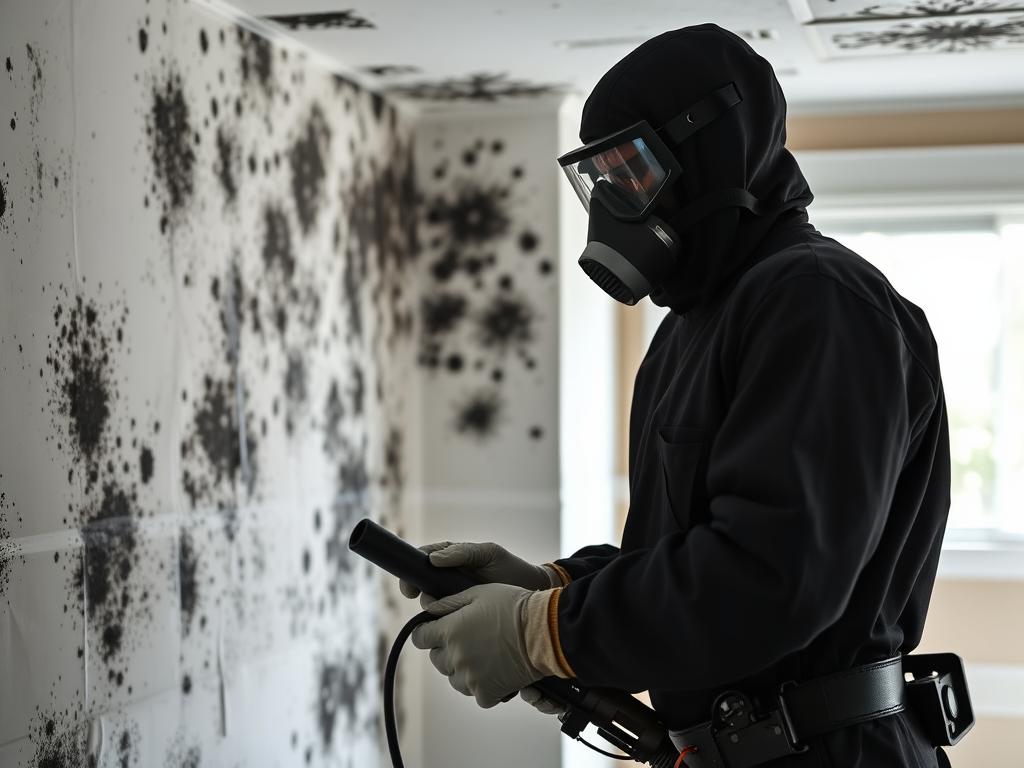
Certified technician with proper PPE during remediation
What Certification Ensures
Choosing a certified stachybotrys mold remediation professional ensures:
Proper Containment
Certified technicians know how to properly isolate affected areas to prevent cross-contamination and spore spread throughout your property.
Safe Removal Techniques
Professionals follow established protocols for safe removal and disposal of contaminated materials according to EPA guidelines.
Thorough Testing
Certified remediation includes proper testing before and after remediation to ensure complete removal of the hazardous mold.
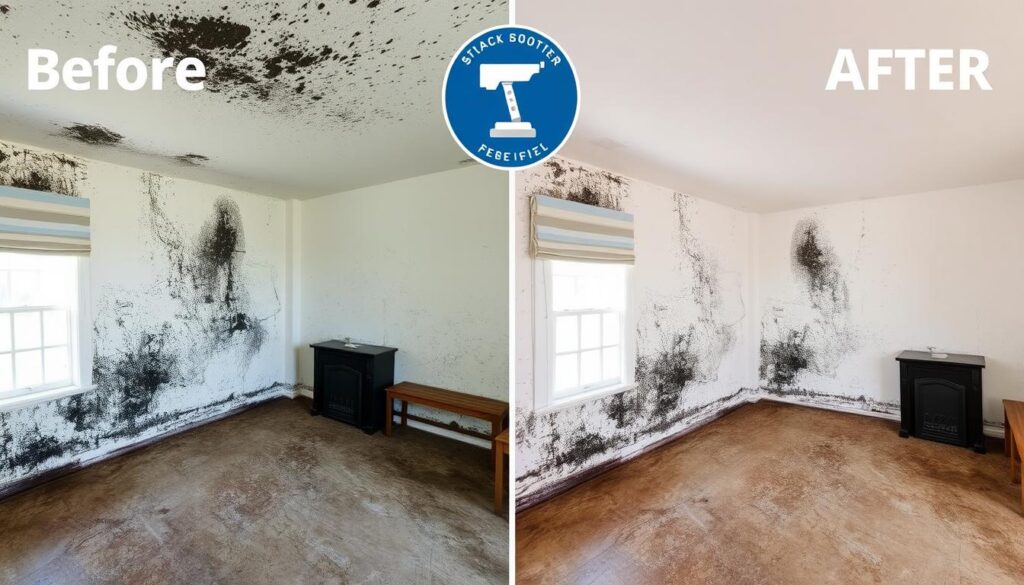
Before and after professional stachybotrys mold remediation
The Certified Stachybotrys Mold Remediation Process
Professional remediation of Stachybotrys follows a comprehensive, systematic approach that ensures complete removal while protecting occupants and remediation workers. Understanding this process helps property owners know what to expect.
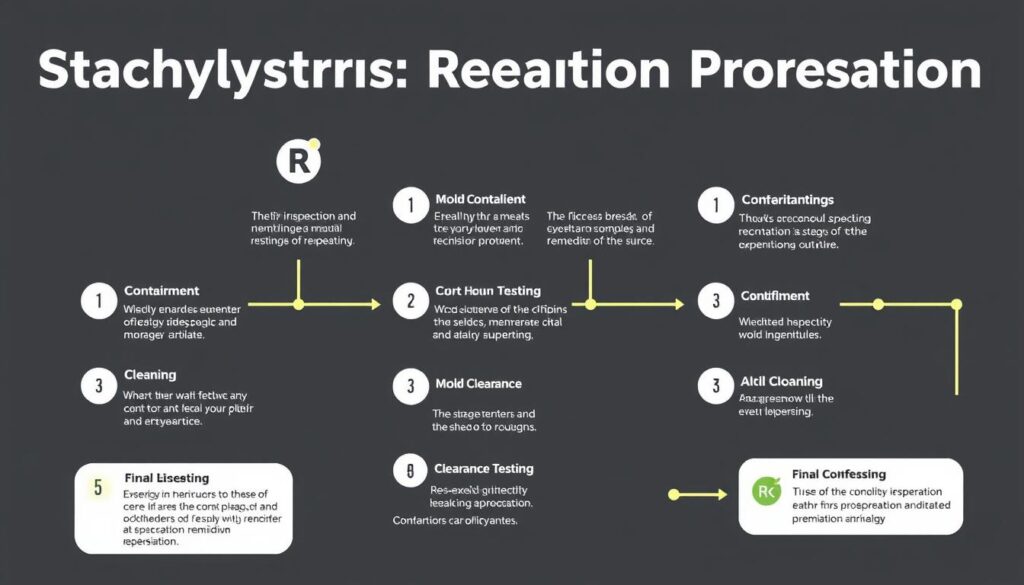
The complete certified stachybotrys mold remediation process
Step-by-Step Remediation Process
Initial Assessment and Inspection
Certified technicians conduct a thorough inspection to identify the extent of Stachybotrys contamination and locate the moisture source. This may include visual inspection, moisture readings, and air/surface sampling.
Containment Setup
Before any remediation begins, the affected area is isolated using polyethylene sheeting and negative air pressure to prevent spores from spreading to unaffected areas. HVAC systems are sealed off to prevent cross-contamination.
Air Filtration
HEPA air scrubbers are installed to capture airborne spores during the remediation process, improving air quality and reducing contamination risk.
Removal of Contaminated Materials
Materials with Stachybotrys growth that cannot be salvaged (like porous building materials) are carefully removed, double-bagged, and disposed of according to regulations.
Cleaning and Sanitizing
Remaining surfaces are thoroughly cleaned using specialized antimicrobial solutions designed specifically for Stachybotrys. This includes HEPA vacuuming and detailed surface cleaning.
Biocide Application
EPA-approved biocides are applied to kill remaining mold spores and prevent regrowth. This is followed by encapsulants on structural materials when appropriate.
Drying and Dehumidification
The area is thoroughly dried using professional equipment to eliminate moisture that could lead to future mold growth.
Clearance Testing
Post-remediation verification testing confirms the successful removal of Stachybotrys and ensures the area is safe for occupancy.
Need Professional Stachybotrys Remediation?
Our certified technicians follow all industry protocols to ensure safe, complete removal of toxic black mold from your property.
DIY vs. Professional Certified Stachybotrys Mold Remediation
Many property owners consider tackling mold problems themselves, but when it comes to Stachybotrys, this approach can be dangerous and ineffective.
Professional Remediation Benefits
- Proper containment prevents spread of toxic spores
- Certified technicians have specialized equipment
- Complete removal of all contaminated materials
- Identification and resolution of moisture sources
- Verification testing ensures complete remediation
- Insurance documentation and compliance
- Health and safety protection for occupants
DIY Remediation Risks
- Exposure to toxic mycotoxins without proper PPE
- Improper removal spreads spores throughout property
- Incomplete remediation leads to regrowth
- Underlying moisture issues often missed
- No verification testing to confirm safety
- Potential insurance claim complications
- Serious health risks for you and your family
“The goal of remediation is to remove or clean mold-damaged materials using work practices that protect occupants by controlling the dispersion of mold from the work area and protect remediation workers from exposures to mold.”
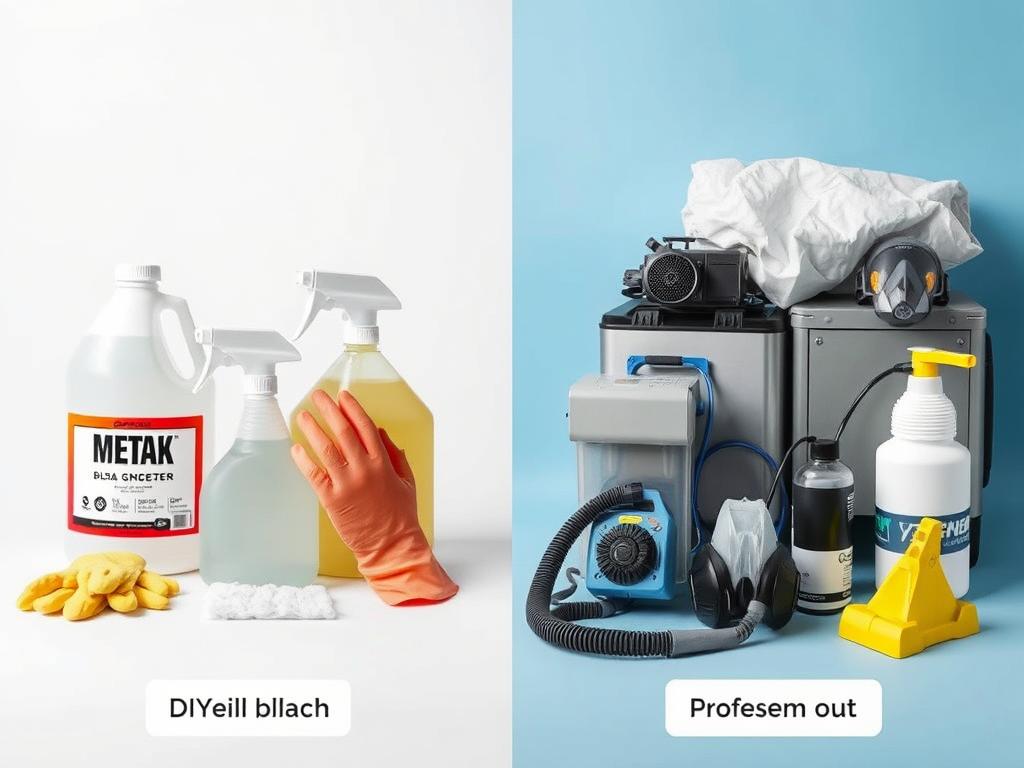
DIY cleaning supplies vs. professional remediation equipment
How to Choose a Certified Stachybotrys Mold Remediation Professional
Selecting the right remediation company is crucial for ensuring effective and safe removal of Stachybotrys mold. Here are the key factors to consider when choosing a certified professional:
Proper Certification
Verify that technicians hold current IICRC, ACAC, or other recognized industry certifications specifically for mold remediation.
Experience with Stachybotrys
Ask about their specific experience with black mold remediation and request references from similar projects.
Insurance and Licensing
Ensure they carry proper liability insurance and any required state or local licensing for mold remediation work.
Detailed Protocol
They should provide a clear, written remediation plan that follows EPA and industry guidelines for Stachybotrys removal.
Testing Procedures
Ask about their testing methods both before and after remediation to verify complete removal.
Written Guarantee
Reputable companies offer guarantees on their work and clearance testing to ensure complete remediation.
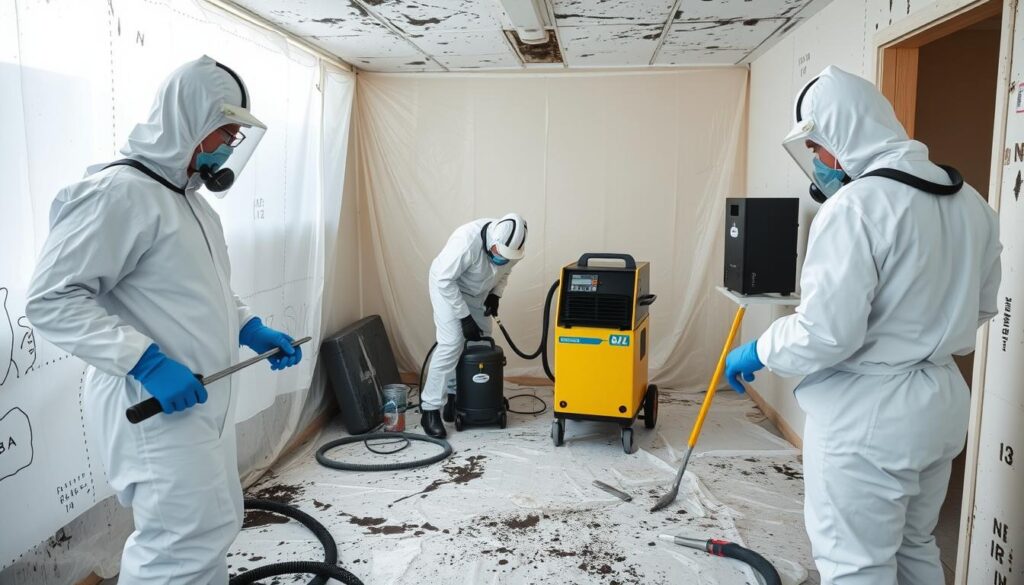
Certified technicians using specialized equipment for safe remediation
Questions to Ask Before Hiring
- What specific certifications do your technicians hold for mold remediation?
- How many Stachybotrys remediation projects have you completed?
- What containment and air filtration methods do you use?
- Will you provide clearance testing after remediation?
- Do you offer a written guarantee for your work?
- Can you provide references from similar black mold projects?
- Will you identify and address the underlying moisture source?
Preventing Future Stachybotrys Growth After Remediation
After professional certified stachybotrys mold remediation, preventing future growth is essential. Stachybotrys requires constant moisture to thrive, so moisture control is the key to prevention.
Essential Prevention Strategies
- Fix water leaks immediately – Address plumbing issues, roof leaks, and foundation seepage promptly
- Control indoor humidity – Maintain levels between 30-50% using dehumidifiers if necessary
- Ensure proper ventilation – Use exhaust fans in bathrooms, kitchens, and laundry areas
- Inspect regularly – Check previously affected areas and potential problem spots
- Use mold-resistant products – When rebuilding, use mold-resistant drywall, paint, and building materials
- Maintain HVAC systems – Regular cleaning and maintenance prevents mold in ductwork
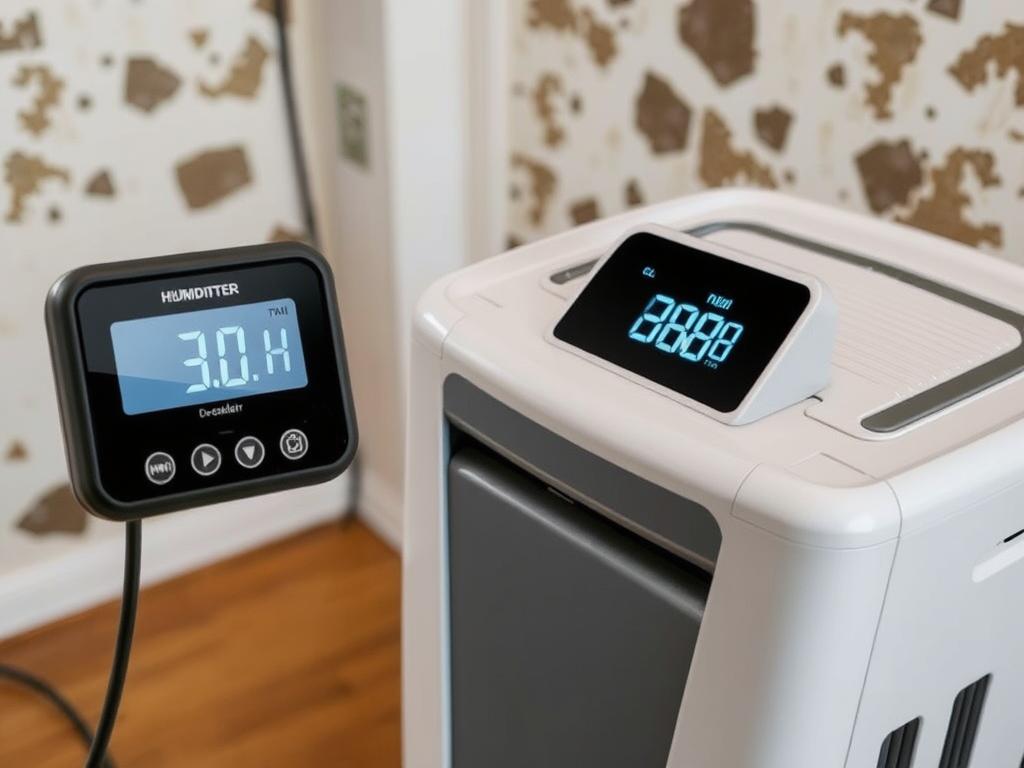
Proper moisture control is essential for preventing regrowth
Warning Signs of Returning Mold
Even after professional remediation, be vigilant for these signs that could indicate returning Stachybotrys growth:
- Musty, earthy odors
- Visible water stains or discoloration
- Recurring respiratory symptoms when in the building
- Peeling or bubbling paint/wallpaper
- Excessive condensation on windows or surfaces
Frequently Asked Questions About Certified Stachybotrys Mold Remediation
How can I identify Stachybotrys (black mold) in my home?
Stachybotrys typically appears as dark greenish-black patches with a slimy or slightly fuzzy texture. It grows on materials with high cellulose content that have been exposed to prolonged moisture. However, visual identification alone is not reliable—professional testing is recommended to confirm Stachybotrys presence, as other mold types can also appear black.
How much does certified stachybotrys mold remediation typically cost?
The cost of certified stachybotrys mold remediation varies widely depending on the extent of contamination, size of the affected area, and required containment measures. Small, localized remediation might cost 0-
Frequently Asked Questions About Certified Stachybotrys Mold Remediation
How can I identify Stachybotrys (black mold) in my home?
Stachybotrys typically appears as dark greenish-black patches with a slimy or slightly fuzzy texture. It grows on materials with high cellulose content that have been exposed to prolonged moisture. However, visual identification alone is not reliable—professional testing is recommended to confirm Stachybotrys presence, as other mold types can also appear black.
How much does certified stachybotrys mold remediation typically cost?
The cost of certified stachybotrys mold remediation varies widely depending on the extent of contamination, size of the affected area, and required containment measures. Small, localized remediation might cost $500-$1,500, while extensive remediation involving multiple rooms can range from $3,000-$10,000 or more. Most reputable companies offer free assessments to provide accurate estimates.
Is certified stachybotrys mold remediation covered by insurance?
Insurance coverage for mold remediation varies by policy. Typically, if the mold resulted from a covered peril (like a burst pipe), remediation may be covered. However, mold from ongoing maintenance issues or humidity problems is often excluded. Professional remediation companies can help document the cause and extent of damage for insurance claims.
How long does professional stachybotrys mold remediation take?
The timeline for certified stachybotrys mold remediation depends on the extent of contamination. Small areas might be completed in 1-3 days, while larger or more complex remediation projects can take 1-2 weeks. This includes containment setup, removal, cleaning, and clearance testing. Your remediation professional should provide a specific timeline for your situation.
Can I stay in my home during certified stachybotrys mold remediation?
Whether you can remain in your home depends on the extent and location of the contamination. For small, contained areas, you may be able to stay if proper containment is established. However, for extensive Stachybotrys remediation, temporary relocation is often recommended, especially for individuals with respiratory conditions, compromised immune systems, children, or elderly residents.
,500, while extensive remediation involving multiple rooms can range from ,000-,000 or more. Most reputable companies offer free assessments to provide accurate estimates.
Is certified stachybotrys mold remediation covered by insurance?
Insurance coverage for mold remediation varies by policy. Typically, if the mold resulted from a covered peril (like a burst pipe), remediation may be covered. However, mold from ongoing maintenance issues or humidity problems is often excluded. Professional remediation companies can help document the cause and extent of damage for insurance claims.
How long does professional stachybotrys mold remediation take?
The timeline for certified stachybotrys mold remediation depends on the extent of contamination. Small areas might be completed in 1-3 days, while larger or more complex remediation projects can take 1-2 weeks. This includes containment setup, removal, cleaning, and clearance testing. Your remediation professional should provide a specific timeline for your situation.
Can I stay in my home during certified stachybotrys mold remediation?
Whether you can remain in your home depends on the extent and location of the contamination. For small, contained areas, you may be able to stay if proper containment is established. However, for extensive Stachybotrys remediation, temporary relocation is often recommended, especially for individuals with respiratory conditions, compromised immune systems, children, or elderly residents.
The Importance of Acting Quickly on Stachybotrys Contamination
When it comes to Stachybotrys chartarum, delay can lead to more extensive contamination, greater property damage, and increased health risks. Certified stachybotrys mold remediation is an investment in both your property’s value and your family’s health.
Professional remediation not only removes the immediate threat but also addresses underlying moisture issues and provides verification that your environment is safe. With proper remediation and preventive measures, you can ensure your property remains free of this dangerous mold species.
Protect Your Health and Property Today
Our certified technicians are ready to provide a thorough assessment and develop a customized remediation plan for your property.
Or call us directly at (800) 400-ROOF
